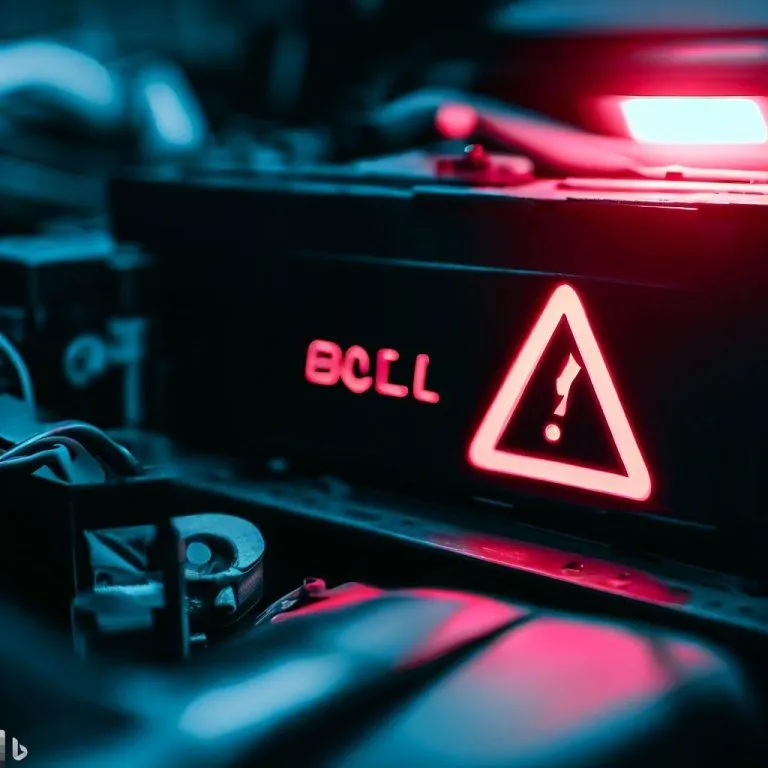Is the OBD port not working? Here’s how to fix it!

If you’ve ever been driving and your check engine light has come on, you know the sensation of dread that can come over you but before you start panicking, there’s one thing you should check first, your OBD port.
If your OBD port is not working, it could be because the fuse has blown or the scanner plug is damaged. If the fuse for the OBD port blows, it will need replacement. We’ll show you how to fix both of these problems. Read on!
You can follow the instructions in this article to troubleshoot and repair typical OBD port issues.
Symptoms of a wrong OBD2 port:
A wrong OBD2 port can cause various symptoms, including:
• Check Engine Light is coming on
• Difficulty starting the engine
• Poor fuel economy
• Stalling
OBD2 port:
An OBD or onboard diagnostic port interfaces a computer with a vehicle to diagnose issues or potential problems. The port provides access to the vehicle’s control system and can be used to read and clear error codes and monitor various systems within the vehicle.
Location of OBD2 port:
The OBD port is typically placed under the dashboard on the driver’s side of the vehicle, mainly near the steering wheel. However, some cars might have OBD 2 ports close to the passenger side.
It may be hidden behind a cover or panel, so consult your owner’s manual if you cannot find it. Once you have located the port, you can plug in your OBD scanner.
Why is my OBD port not working?
1: Check the Fuse
The initial thing you should do if your OBD port is not working is to check the fuses.
The fuse for the OBD port is usually located in the engine bay or under the dash. If the fuse blows, it will need replacement.
Take the fuse out of the fuse box and test it with another fuse to see whether it has blown. If you cannot see your tester lightening up after touching the terminals of the fuse, it is probably blown and will need replacement. You can purchase a new fuse from an automobile mobile shop or online.
2: Check the OBD Port
Once you have checked and replaced any blown fuses, you should check the OBD port for any damage. The port may have become damaged due to a drop in voltage, which can happen if the problem is with the battery or alternator.
If the port looks damaged, it will need to be replaced. A new port can be purchased from an auto parts store or online. Be sure to get one compatible with your car’s make and model.
3: Check any Loose Connection
Another reason your OBD-II port might not work could be a loose connection between the port and your car’s computer.
The OBD-II connector may generally be repaired by unplugging and re-plugging it. Make sure you listen to the click sound when you plug it in, indicating that it’s seated correctly.
If this doesn’t fix the problem, you will have to replace the OBD-II connector altogether.
4: Check for Obstructions
It is also possible that something may be blocking your OBD port, preventing it from working correctly. To check for this, look at the port and make sure nothing is blocking it (e.g., a piece of dirt or lint).
If there appears to be something blocking the port, you can try using a can of compressed air to blow it out (make sure not to use too much pressure so as not to cause damage). Otherwise, you may need to take your car to a mechanic or dealership so they can clear out any obstruction manually.
5: OBD scanner plug or DLC issue
If your car’s OBD port does not seem to be working even after taking all of these steps, there could be an issue with either the OBD scanner plug itself or the data link connector (DLC).
To rule out an issue with the DLC, unplug it from the diagnostic to land inspect its condition. If everything looks okay, replot into the DLC and try scanning again.
However, if this doesn’t work or you notice any physical damage on either the DLC or OBD scanner plug, you’ll likely need to get a new one from an auto parts shop or online retailer.
6: Corroded pins
Over time, corrosion can build up on the pins in the OBD port, preventing proper electrical contact from being made. This is usually only a problem if you live in an area with high humidity or salty air (near the ocean).
7: Use a Multimeter to Check for Power
Finally, use a multimeter to test for power at both terminals of the OBD port connector (the battery voltage terminal and ground terminal). No power indicates a problem with the fuse or wiring harness.
8: Malfunctioning OBD port
In rare cases, there may be something wrong with the OBD port itself. If all of the other potential causes have been ruled out and you still have problems, you may need to replace the OBD port entirely.
How to Fix OBD2 Port Fuse Blown?
What you will need:
- A screwdriver new OBD2 port fuse
- Pliers (optional)
Steps:
Step 1: Locate the fuse box in your car. This is usually under the hood but can also be located in the trunk or on the driver’s side dash. Consult your car’s owner’s manual if you have trouble finding it.
Step 2: Once you have found the fuse box, open it and locate the blown fuse for the OBD2 port, which will usually be at the 9th number on the picture under your car’s hood. It will likely be labeled as “OBD” or “OBD2.”
Step 3: Use a screwdriver to remove the blown a fuse and replace it with a new one of the same amperage.
Step 4: Close the fuse box and start your car. The OBD2 port should now be working correctly. If not, consult a professional mechanic for further diagnosis.
How to fix a damaged scanner plug on an OBD2 port?
What you will need:
To fix a damaged scanner plug on an OBD2 port, you will need the following tools and materials:
- A replacement scanner plug (obtained from an auto parts store or online retailer).
- A small flathead screwdriver.
- A pair of needle-nose pliers.
Steps:
Follow the steps below to fix a damaged scanner plug on an OBD2 port:
1) Start using the small flathead screwdriver to remove the port’s old, damaged scanner plug. Be careful not to damage the port itself in the process.
2) Once the old scanner plug has been removed, take your replacement plug and insert it into the port.
3) If required, lightly secure the new scanner plug with the needle-nose pliers.
4) That’s it! Your OBD2 port is now repaired and ready to be used again.
Frequently Asked Questions:
A: Yes, a blown a fuse can cause a check engine light. If you have replaced your fuse and your check engine light is still on, you may have to scan your car for codes by a professional mechanic or dealership service center.








